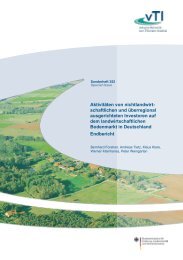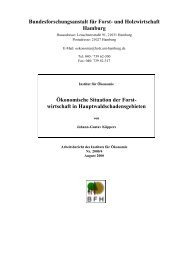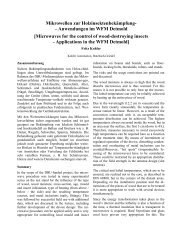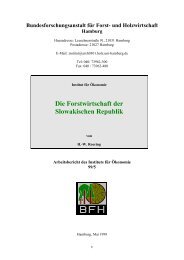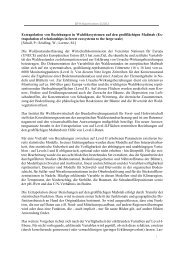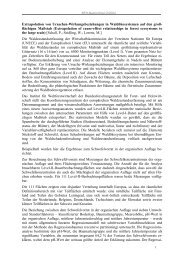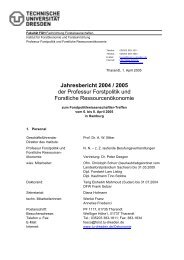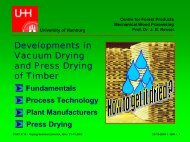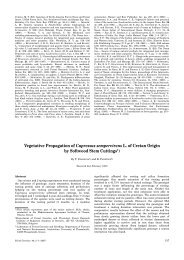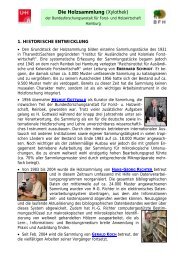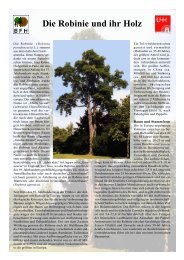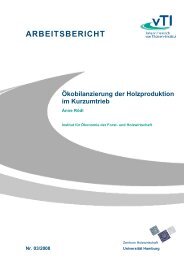STATE OF THE ART REVIEWS
STATE OF THE ART REVIEWS
STATE OF THE ART REVIEWS
You also want an ePaper? Increase the reach of your titles
YUMPU automatically turns print PDFs into web optimized ePapers that Google loves.
COST ACTION E22: Environmental optimisation of wood protection<br />
Present status of the program work<br />
- Documentary study on the minimal criteria imposed by the European standards<br />
on the utilisation of wood in contact with soil and sea water;<br />
- Development of the experimental methodologies for the laboratory testing;<br />
- Laboratory testing - antifungal efficiency of Tanalith C 3310;<br />
- Documentary study on the status of the research on wood biodegradability and<br />
protection while in contact with soil and sea water;<br />
- Laboratory testing - soft rot testing (SR ENV 807 - second test);<br />
- Field testing - soil fixed test specimens;<br />
- Seawater immersion (SR EN 275).<br />
Next Steps<br />
- Laboratory testing - soft rot testing (SR ENV 807 - first test);<br />
- Analysing and evaluation of test results;<br />
- Establishment by chemical and spectro-photo-chemical tests of the preservation<br />
chemicals leakage from wood into soil or sea water;<br />
- Lab and field testing of other wood preservatives specific to the utilisation in<br />
risk classes 4 and 5;<br />
- Development of application technologies and instructions for the tested<br />
preservatives.<br />
• Insects in Europe, climatical conditions<br />
Xylophagus insects specific to climatical conditions in Romania. The wood as a<br />
vegetal organic product, rich in nutrients, is the main food source for xylophagus<br />
biological agents.<br />
Depending on attack specificity the xylophagus insects are grouped in three categories:<br />
- insects attacking the hardwood in the stores (logs, sawn timber, semi finished<br />
products, friezes and parquetry strips);<br />
- insects attacking the coniferous wood in the stores (logs, sawn timber);<br />
The wood infestation with xylophagus insects in the climatically conditions of<br />
our country is favourised by the following factors:<br />
- physiological and phytosanitary conditions of stands (trees with advanced<br />
physiological weakness as a result of hard vegetation conditions and trees with<br />
advanced drying);<br />
- storing time and conditions; wood infestation in the stores as a result of existence<br />
of focus points in the wood during longer storing times;<br />
- improper utilisation (without suitable protection) of wooden material in the<br />
buildings; Hylotrupes bajulus is the species attacking mostly old coniferous<br />
wood in constructions from mountain regions, with temperature fluctuations<br />
between - 20ºC and +25ºC and relative humidity between 55% - 85%.<br />
Figure 3 shows main xylophagus inspect species specific climatically conditions of<br />
Romania (temperate continental climate).<br />
131



